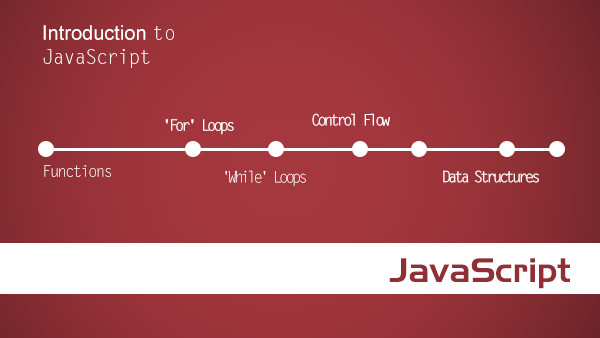本文详细介绍了useReducer的使用,包括其基本概念、状态和动作的管理、函数式编程思想以及状态管理的灵活性。通过具体示例展示了如何在React组件中安装和使用useReducer,并提供了实战案例和调试技巧。
1. 介绍useReducer的基本概念
useReducer 是 React 中提供的一个 Hook,用于管理组件状态。它通常用来替代 useState,特别是在状态逻辑比较复杂时。useReducer 采用了一种更结构化的状态管理方式,使得状态更新逻辑更加清晰和易于管理。
1.1 状态和动作
在使用 useReducer 时,状态通常被定义为一个对象,而状态的变化通过“动作”(action)来触发。动作是一种描述状态变化行为的对象,通常包含一个 type 属性来表示动作的类型,以及可能的其他属性来携带必要的信息。
1.2 函数式编程思想
useReducer 的核心是将状态更新的逻辑封装在一个“reducer 函数”中,这个函数接受当前状态和动作作为输入,返回新的状态。这种函数式编程的思想使得状态更新逻辑变得纯粹,更容易复用和测试。
1.3 状态管理的灵活性
useReducer 提供了更多的灵活性,特别是对于复杂的状态逻辑。你可以使用 useReducer 来管理多个状态变量,或者创建一个全局的状态管理器,这些操作在 useState 中不太容易实现。
2. 安装和引入useReducer
为了使用 useReducer,你需要首先确保你的项目已经安装了 React。如果你还没有安装,请使用 npm 或 yarn 安装:
# 使用 npm 安装
npm install react react-dom
# 使用 yarn 安装
yarn add react react-dom一旦安装了 React,你可以直接在你的组件中使用 useReducer:
import React, { useReducer } from 'react';
function ExampleComponent() {
const [state, dispatch] = useReducer(reducer, initialState);
return (
<div>
<p>当前状态: {state.count}</p>
<button onClick={() => dispatch({ type: 'increment' })}>增加</button>
</div>
);
}
function reducer(state, action) {
switch (action.type) {
case 'increment':
return { ...state, count: state.count + 1 };
default:
return state;
}
}
const initialState = { count: 0 };
export default ExampleComponent;3. 使用useReducer管理React组件状态
在使用 useReducer 管理状态时,你需要定义一个 reducer 函数和一个初始状态。reducer 函数接受当前状态和动作作为参数,并返回新的状态。初始状态是组件状态的起点。
3.1 定义初始状态
初始状态通常是组件开始时的状态值。它是一个对象,可以包含多个状态变量。例如:
const initialState = {
count: 0,
name: "张三",
flag: false
};3.2 编写reducer函数
reducer 函数是状态更新的核心。它接受当前状态和动作作为参数,并根据动作的类型返回新的状态。例如:
function reducer(state, action) {
switch (action.type) {
case 'increment':
return { ...state, count: state.count + 1 };
case 'setName':
return { ...state, name: action.payload.name };
case 'setFlag':
return { ...state, flag: action.payload.flag };
default:
return state;
}
}3.3 使用dispatch发送动作
你可以使用 dispatch 函数发送动作来更新状态。dispatch 接收一个动作对象,根据动作的类型,reducer 会进行相应的状态更新:
<button onClick={() => dispatch({ type: 'increment' })}>增加</button>
<button onClick={() => dispatch({ type: 'setName', payload: { name: '李四' } })}>更改名字</button>
<button onClick={() => dispatch({ type: 'setFlag', payload: { flag: true } })}>切换标记</button>4. 实战案例:创建一个简单的计数器应用
下面是一个简单的计数器应用,使用 useReducer 来管理状态。这个应用包含一个计数器,用户可以通过点击按钮来增加计数器的值。
4.1 定义组件
首先,我们需要定义一个组件来使用 useReducer:
import React, { useReducer } from 'react';
function Counter() {
const [state, dispatch] = useReducer(reducer, initialState);
return (
<div>
<p>当前计数: {state.count}</p>
<button onClick={() => dispatch({ type: 'increment' })}>增加</button>
</div>
);
}
function reducer(state, action) {
switch (action.type) {
case 'increment':
return { ...state, count: state.count + 1 };
default:
return state;
}
}
const initialState = { count: 0 };
export default Counter;4.2 定义reducer函数
接下来,定义 reducer 函数来处理不同的动作:
function reducer(state, action) {
switch (action.type) {
case 'increment':
return { ...state, count: state.count + 1 };
default:
return state;
}
}
``
#### 4.3 使用useReducer
在组件中,使用 `useReducer` 来获取状态和 dispatch 函数:
```jsx
const [state, dispatch] = useReducer(reducer, initialState);4.4 处理动作
通过 dispatch 函数发送动作来更新状态:
<button onClick={() => dispatch({ type: 'increment' })}>增加</button>5. 如何调试useReducer
调试 useReducer 时,主要关注状态的变化和动作的处理。以下是一些常用的调试技巧:
5.1 使用 console.log
在组件或 reducer 中使用 console.log 打印状态和动作,以便观察状态的变化和动作的影响:
function reducer(state, action) {
console.log('state:', state);
console.log('action:', action);
switch (action.type) {
case 'increment':
return { ...state, count: state.count + 1 };
default:
return state;
}
}5.2 使用 React DevTools
React DevTools 是一个浏览器插件,可以帮助你调试 React 应用。通过它,你可以查看组件树、状态树以及状态的变化。安装 React DevTools 后,在浏览器中打开 DevTools,选择 React 选项卡,查看组件的状态和动作。
5.3 使用 Redux DevTools
虽然 useReducer 本身不直接与 Redux 关联,但可以结合 Redux DevTools 来进行更高级的调试。安装 Redux DevTools 后,你可以在 reducer 中添加额外的逻辑来支持 Redux DevTools:
import { createStore, applyMiddleware } from 'redux';
import { composeWithDevTools } from 'redux-devtools-extension';
function createStoreWithMiddleware(reducer) {
return createStore(reducer, composeWithDevTools());
}
const initialState = { count: 0 };
const store = createStoreWithMiddleware(reducer);
function reducer(state = initialState, action) {
switch (action.type) {
case 'increment':
return { ...state, count: state.count + 1 };
default:
return state;
}
}6. 常见问题与解答
6.1 为什么使用useReducer而不是useState?
useState适用于简单的状态管理,特别是当状态更新逻辑比较简单时。但是,当状态逻辑变得复杂时,使用useReducer可以使代码更清晰、更易于管理。useReducer适用于以下情况:- 状态更新逻辑比较复杂,需要多个状态变量。
- 状态更新需要处理多个不同的动作。
- 你希望将状态更新的逻辑分离,以便更好地测试和复用。
6.2 如何处理异步操作?
- 如果状态更新涉及异步操作(例如发送网络请求),可以在 dispatch 动作时返回一个函数,该函数在异步操作完成后调用
dispatch来更新状态:
<button onClick={() => dispatch(incrementAsync())}>
异步增加
</button>
function incrementAsync(dispatch) {
setTimeout(() => {
dispatch({ type: 'increment' });
}, 1000);
}6.3 如何在组件之间共享状态?
- 如果你需要在多个组件之间共享状态,可以使用
useContext结合useReducer。首先定义一个 context,然后在父组件中使用useReducer来管理状态,并通过useContext在子组件中访问这些状态。
import React, { useContext, useReducer, createContext } from 'react';
const CounterContext = createContext();
function CounterProvider({ children }) {
const [state, dispatch] = useReducer(reducer, initialState);
return (
<CounterContext.Provider value={{ state, dispatch }}>
{children}
</CounterContext.Provider>
);
}
function CounterConsumer({ children }) {
const { state, dispatch } = useContext(CounterContext);
return (
<div>
<p>当前计数: {state.count}</p>
<button onClick={() => dispatch({ type: 'increment' })}>增加</button>
{children}
</div>
);
}
function CounterChild() {
const { state, dispatch } = useContext(CounterContext);
return (
<button onClick={() => dispatch({ type: 'increment' })}>增加 (子组件)</button>
);
}
export default function App() {
return (
<CounterProvider>
<CounterConsumer>
<CounterChild />
</CounterConsumer>
</CounterProvider>
);
}6.4 使用useReducer时需要注意什么?
- 避免副作用:在
useReducer中,避免在 reducer 函数中执行副作用(如网络请求、DOM 操作等)。副作用应该放在组件的其他地方,比如useEffect钩子中。 - 保持纯函数:reducer 函数应该保持纯函数的特性,只依赖于输入(当前状态和动作),并且没有副作用。
- 管理复杂的逻辑:对于复杂的逻辑,可以考虑将 reducer 函数拆分成更小的函数,以便更好地管理和复用。

 随时随地看视频
随时随地看视频



